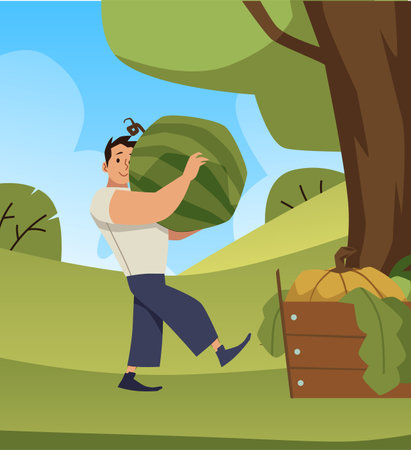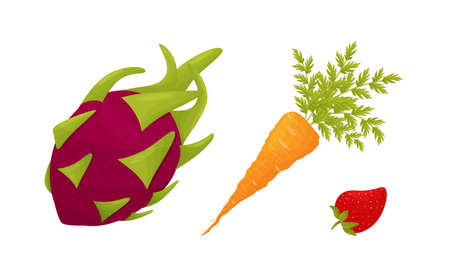Introduction to Vegetable Garden Pests
Every American home vegetable garden is a tapestry of vibrant colors, fresh flavors, and seasonal bounty—but it can also become a haven for unwelcome visitors. Common pests such as aphids, tomato hornworms, squash bugs, and cucumber beetles are notorious for their ability to quickly damage or destroy entire crops if left unchecked. Understanding the lifecycles of these pests is not just a matter of curiosity; it’s the cornerstone of effective, environmentally friendly garden management. When we tune in to the rhythms of the natural world—recognizing when pests emerge, how they reproduce, and where they prefer to feed—we empower ourselves to respond proactively rather than reactively. This knowledge helps gardeners choose the right interventions at the right time, protecting both plants and pollinators while nurturing a thriving, resilient landscape. In this article, we’ll explore the lifecycle and identification of some of the most common vegetable garden pests found across American backyards, setting the stage for smart and sustainable pest control strategies.
2. Understanding Pest Lifecycles
To effectively manage pests in the vegetable garden, it’s essential to understand their lifecycles. Most common garden pests—whether insects, mites, or beetles—undergo distinct stages of development: eggs, larvae or nymphs, pupae (for some), and adults. Each stage presents unique vulnerabilities that gardeners can target with well-timed interventions.
Key Pest Lifecycle Stages
| Stage | Description | Control Opportunities |
|---|---|---|
| Egg | Tiny, often hidden on leaf undersides or soil; hatch into larvae or nymphs. | Remove infested leaves; apply horticultural oils to smother eggs. |
| Larvae/Nymphs | Active feeding stage; caterpillars, grubs, or soft-bodied young insects. | Handpick, introduce beneficial insects, use targeted organic sprays. |
| Pupae | Transitional stage (in soil or plant material); less mobile and harder to reach. | Disturb soil in late fall/winter to expose pupae to predators and elements. |
| Adult | Mature form; responsible for reproduction and often visible damage. | Install traps, encourage birds/predators, use row covers to prevent egg laying. |
The Importance of Timing Interventions
The effectiveness of pest control strategies is closely tied to timing. For example, applying treatments when eggs are present can prevent future generations. Removing larvae before they pupate reduces adult populations. Observing your garden weekly helps catch issues early—when pests are most vulnerable—and minimizes the need for broad-spectrum chemical controls.
A Seasonally Attuned Approach
By syncing your pest management efforts with the seasonal rhythms of insect life, you not only protect your vegetables but also foster a more balanced ecosystem. With patience and observation, every gardener can disrupt pest lifecycles thoughtfully and sustainably.

3. Identifying Common Vegetable Garden Pests
Recognizing the unwelcome visitors in your vegetable garden is the first step toward effective, sustainable management. Across the United States, a handful of notorious pests make their presence known through distinctive appearances and telltale damage. Let’s visually and descriptively guide you through identifying these common culprits, so your garden landscape remains vibrant and thriving.
Aphids: The Tiny Sap-Suckers
Aphids are among the most widespread garden pests, appearing as small, pear-shaped insects clustered on tender stems and undersides of leaves. These soft-bodied bugs range in color from pale green to black, depending on the species. They thrive during the cool, early days of spring and fall, feeding in dense colonies that leave behind sticky honeydew and curled foliage. Watch for them especially on leafy greens, beans, and tomatoes.
Tomato Hornworms: The Green Giants
Easily spotted for their size and striking appearance, tomato hornworms are large caterpillars—up to four inches long—with bright green bodies adorned with diagonal white stripes and a prominent horn at their tail end. They blend remarkably well with tomato plants but can be found munching voraciously on peppers and eggplants too. You’re most likely to encounter these pests mid-to-late summer; look for missing leaves or chewed fruit as key indicators of their presence.
Squash Bugs: The Stealthy Invaders
Squash bugs are shield-shaped insects, grayish-brown in color, that target squash, zucchini, pumpkins, and other members of the cucurbit family. Adults hide beneath leaves or around stems during late spring through summer, while clusters of coppery eggs line leaf undersides. Nymphs are smaller and grayish with black legs. Early detection is crucial—look for wilting vines or yellow spots as signs of their activity.
Where & When to Spot These Pests
The likelihood of encountering each pest varies by season and region: Aphids emerge in cooler weather; tomato hornworms flourish in warm midsummer; squash bugs persist from late spring through harvest. Regular inspection—especially of new growth and leaf undersides—will help you spot these pests before they can do significant harm. By honing your observation skills and learning these visual cues, you’ll cultivate both a beautiful garden space and a deeper connection with your landscape’s rhythms.
4. Signs and Symptoms of Pest Infestation
Every vegetable garden tells a story, and often, the first chapters of pest infestation are written in subtle signs. To keep your edible landscape vibrant and thriving, it’s essential to become fluent in the language of garden clues. Interpreting these indicators not only helps you react quickly but also ensures you address the true cause—distinguishing pests from other plant health issues.
Interpreting Garden Clues: What to Look For
The most common symptoms of pest presence are visible changes to leaves, stems, and fruits. Leaf damage typically appears as holes, chewed edges, or a skeletonized look where only leaf veins remain. Some pests leave behind silky webs, stippling (tiny pale dots), or even distorted growth patterns. Another telltale sign is frass—tiny black or brown droppings—which often collects on leaves or soil below infested plants.
Pest Damage Versus Other Problems
It’s easy to mistake environmental stress or disease for insect mischief. Drought, nutrient deficiencies, or fungal infections can also cause yellowing, wilting, or spots on foliage. The key difference is that pest damage usually comes with physical evidence—chewing marks, tunnels within fruit, webbing, or frass—while non-pest issues rarely show these markers.
Common Pest Symptoms Table
| Pest | Typical Damage | Clues Left Behind | Mimics (Non-Pest Issues) |
|---|---|---|---|
| Caterpillars | Large holes in leaves; ragged edges | Green/brown frass on leaves or soil | Nutrient deficiency (general yellowing) |
| Aphids | Curling/yellowing leaves; sticky residue | Clusters of tiny insects; honeydew; ants present | Fungal infection (leaf curl) |
| Squash Bugs | Wilting vines; yellow spots turning brown | Batches of coppery eggs under leaves; adult bugs hiding at base | Drought stress (wilting without egg clusters) |
| Flea Beetles | Tiny “shotgun” holes in new foliage | Small black beetles seen jumping when disturbed | Wind damage (tearing but not round holes) |
| Spider Mites | Pale stippling; fine webbing under leaves | Very fine silk threads; mites may be visible with magnifying glass | Nutrient burn (browning without webbing) |
The Art of Observation: When to Take Action
A keen eye and regular garden strolls are your best tools for early detection. Pay close attention after weather changes or when new plants are introduced—both can stress your garden and make it more vulnerable to pests. Remember, not all damage warrants drastic measures; sometimes nature’s balance restores itself if beneficial insects are present. By reading these clues thoughtfully, you’ll nurture both your plants and the ecosystem they call home.
5. Eco-Friendly Pest Management Strategies
In the pursuit of a thriving vegetable garden, embracing eco-friendly pest management is not only beneficial for your crops, but also for the broader ecosystem. Understanding the lifecycle stages of common garden pests—from eggs to larvae to adults—empowers gardeners to implement targeted, sustainable solutions at every phase.
Physical Removal: A Hands-On Approach
During the early morning or late afternoon, take a stroll through your garden with gloves and a keen eye. Many pests, such as tomato hornworms and cabbage loopers, are easiest to spot and remove by hand when they’re most active. For soft-bodied insects like aphids, a gentle spray from the hose can dislodge clusters without harming your plants. Keep an eye on the undersides of leaves, where eggs and larvae often hide, and consider using row covers during peak infestation periods to physically block access to vulnerable crops.
Companion Planting: Nature’s Own Deterrent
Strategic companion planting draws upon nature’s own wisdom to repel pests while enhancing garden beauty. Marigolds interplanted with tomatoes deter nematodes and aphids, while basil planted near peppers keeps mosquitoes and flies at bay. Nasturtiums serve as a sacrificial crop for aphids, luring them away from your main harvest. By understanding which plants offer mutual benefits, you create a tapestry of color and texture that supports both productivity and natural pest resistance throughout each pest lifecycle stage.
Organic Products: Garden-Safe Solutions
When intervention is necessary, opt for organic products that safeguard beneficial insects and pollinators. Neem oil disrupts the growth cycle of many soft-bodied pests without lingering residue. Insecticidal soap targets aphids and mites with minimal impact on ladybugs and bees. Diatomaceous earth provides a physical barrier against crawling insects in their larval or adult forms. Always apply these treatments in the early evening or on overcast days to reduce harm to pollinators and ensure maximum efficacy.
Adapting Strategies for Every Lifecycle Stage
The key to sustainable pest control lies in timing interventions according to pest development. Remove egg clusters before hatching, target larvae with natural predators or barriers, and use deterrents or traps for adults. This layered approach harmonizes with the rhythms of your garden, ensuring long-term health and abundance without reliance on harsh chemicals.
Cultivating Balance
By integrating physical removal, thoughtful planting combinations, and gentle organic solutions tailored to each stage of a pest’s life, you foster a resilient vegetable garden that flourishes season after season—rooted in harmony with both nature and American gardening tradition.
6. When to Seek Professional Help
Every passionate gardener treasures the satisfaction of nurturing a thriving vegetable patch, but there are times when common garden pests push beyond the limits of DIY care. Recognizing when to call in professional help is essential for safeguarding both your harvest and the ecological balance of your landscape.
Signs DIY Pest Control Isn’t Enough
Despite diligent efforts—hand-picking insects, rotating crops, or using homemade sprays—some infestations persist or escalate. Key indicators that you might need expert intervention include:
1. Recurring Infestations
If certain pests, such as aphids, cutworms, or squash bugs, return season after season despite your best efforts, it may signal hidden breeding grounds or resistant populations that require specialized treatment.
2. Widespread Damage
When pest damage spreads rapidly across multiple types of vegetables or covers large areas of your garden, the situation can quickly spiral out of control. Professional services can assess and address large-scale problems efficiently.
3. Unknown Pests or Unusual Symptoms
If you notice unfamiliar insects or puzzling symptoms like distorted leaves, unexplained wilting, or irregular holes and can’t confidently identify the cause, experts can provide accurate identification and targeted solutions based on local pest lifecycles and patterns.
Choosing Reputable Local Garden Services
Selecting a trustworthy partner for integrated pest management (IPM) ensures effective results with minimal environmental impact. Consider these guidelines:
Seek Recommendations
Ask fellow gardeners, neighbors, or local extension offices for referrals to reputable garden service providers familiar with American vegetable crops and regional pest issues.
Prioritize Integrated Pest Management (IPM)
Choose companies that emphasize IPM—a holistic approach combining biological controls, habitat modification, and judicious chemical use. This strategy protects beneficial pollinators and supports long-term garden health.
Verify Credentials
Check for certifications from organizations like the National Association of Landscape Professionals (NALP) or Integrated Pest Management Institute of North America. Licensed professionals are trained in safe pesticide application and up-to-date identification methods.
Transparent Communication
A reliable service will walk you through their process: identifying pests by lifecycle stage, explaining control methods, and offering maintenance tips to prevent future outbreaks—empowering you as a steward of your own backyard ecosystem.
Knowing when to seek expert help is not a defeat but an act of stewardship. By collaborating with experienced local professionals committed to sustainable practices, you protect your vegetable haven while fostering a resilient American landscape for seasons to come.


